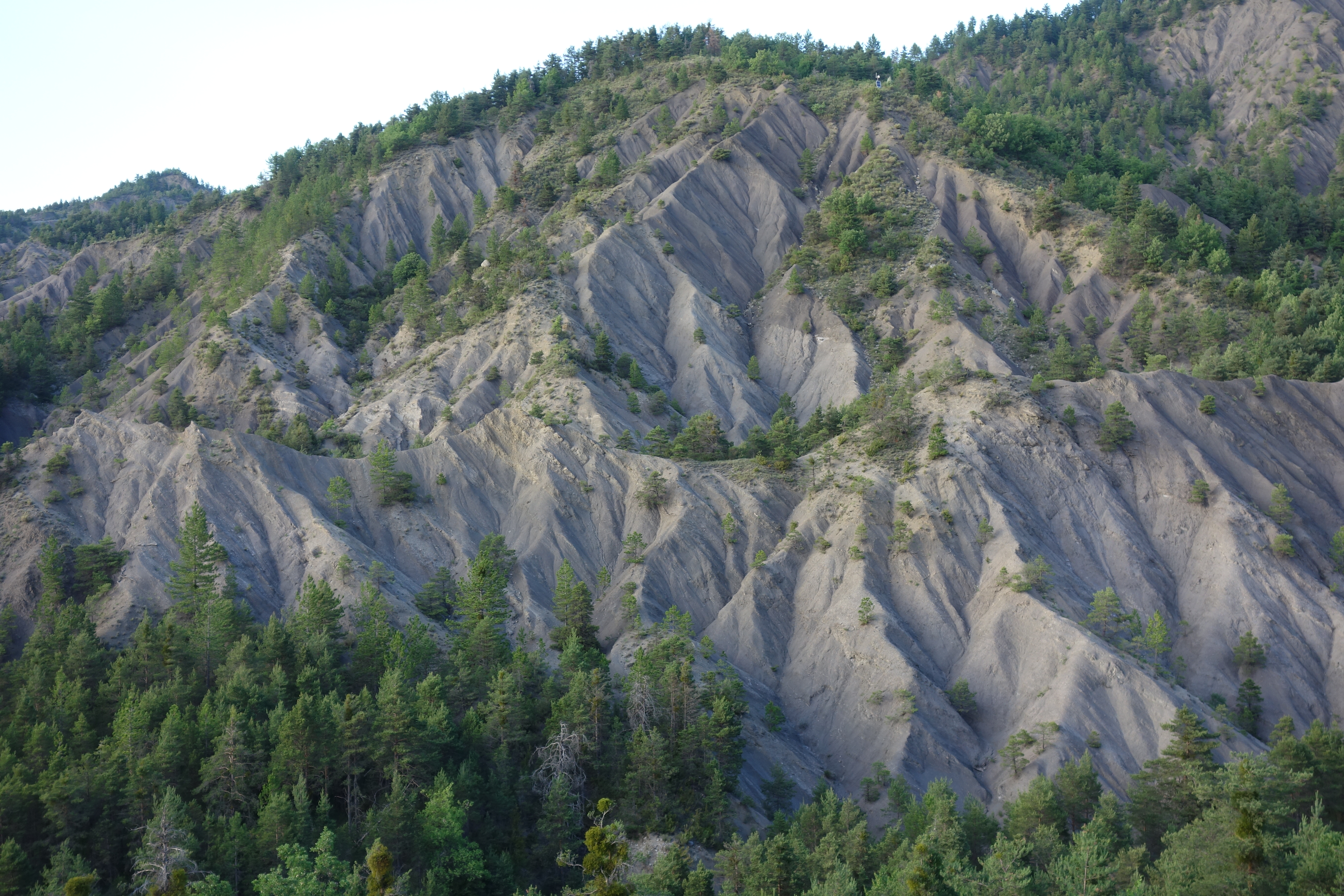Projet ANR CLIMBAD : Climate impact on badland erosion
Badlands are places of intense erosion and key producers of sediment and carbon fluxes to the Mediterranean sea. CLIMBAD aims at predicting future badland erosion under climate change.
Badland erosion is driven by rainfall amount and intensity but is strongly reduced by vegetation cover. On the other hand, vegetation dynamics are sensitive to erosion and topographic features, and to rainfall and temperature changes. Badland erosion is also modulated by weathering that transforms bedrock into soil/regolith providing the supply for erosion. Weathering, and particularly frost-weathering, is sensitive to climate and possibly vegetation. Predicting badland erosion under climate change therefore requires accounting for the coupling between vegetation and erosion on the one hand, and for the role of climate-dependent weathering on erosion on the other hand.
CLIMBAD will address this question by combining long-term field monitoring and numerical modeling. First, long-term records (35 yrs) from Draix-Bleone critical zone observatory (IR OZCAR-eLTER) combined to aerial images will be used to quantify the interactions between vegetation dynamics, erosion and weathering in badlands. Secondly, a general landscape evolution model coupling vegetation dynamics, climate-dependent weathering and erosion processes will be developed. Finally, the model will be applied to predict sediment yield evolution first at the local scale, then at the regional scale (Durance catchment and Mediterranean area) under climate change scenarios.
CLIMBAD will provide new knowledge and tools concerning the future co-evolution of badland erosion and vegetation under climate change, which will help managers design appropriate mitigation strategies.
Funding : ANR
Period : 2023-2026
PI : Caroline Le Bouteiller, IGE-INRAE
Partners : IGE, LESSEM, UMR M2C, LECA, IPGP, University of Colorado in Boulder, Instituto Pirenaico de Ecología
 La fédération
La fédération Intranet
Intranet











